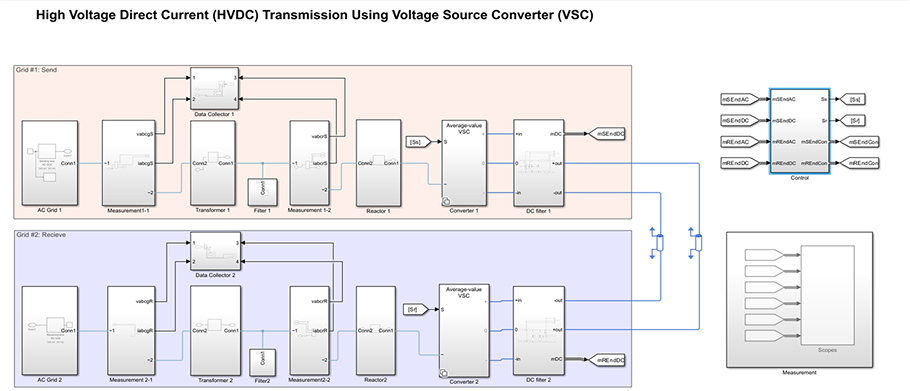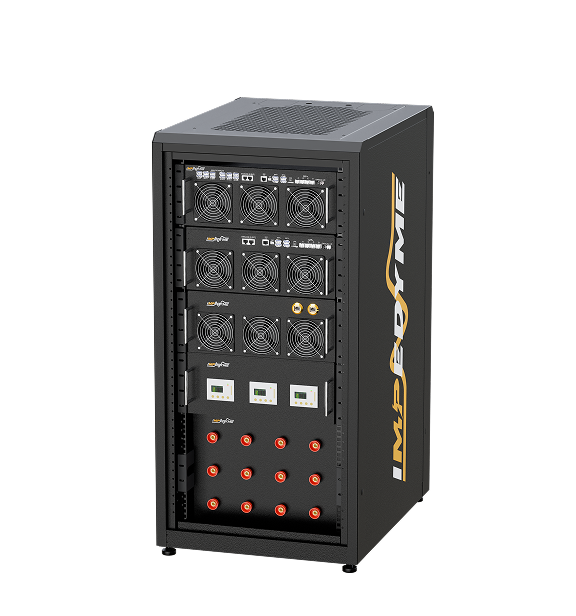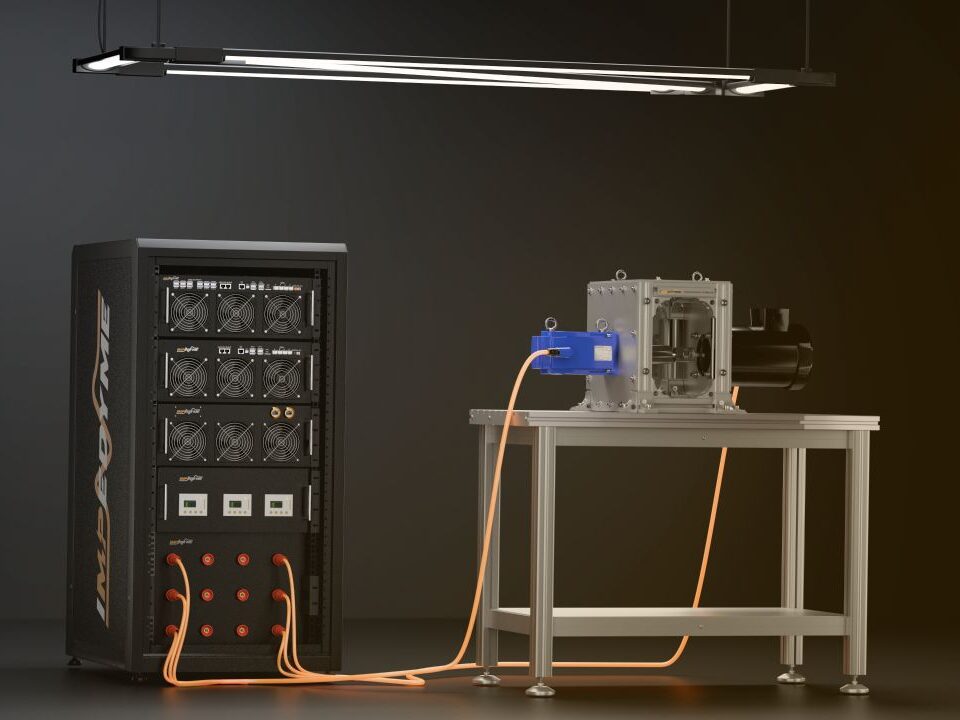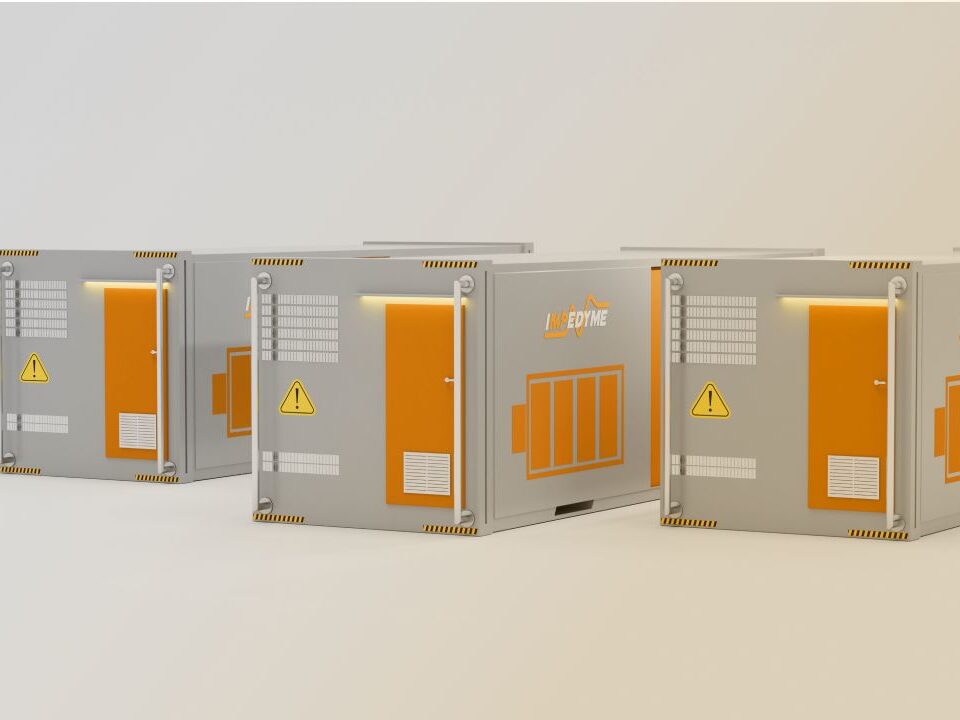
-
 Induction Motor
Induction Motor
-
 Automotive Electrical System Simulation
Automotive Electrical System Simulation
-
 DC/DC Bidirectional Converter
DC/DC Bidirectional Converter
-
 PWM Control for Brushless DC
PWM Control for Brushless DC
-
 BLDC Motor Control and Drive Simulation
BLDC Motor Control and Drive Simulation
-
 Electric Vehicle Fast Charger Simulation
Electric Vehicle Fast Charger Simulation
-
 DFIG Wind Turbine Simulation
DFIG Wind Turbine Simulation
-
 Dual Active Bridge
Dual Active Bridge
-
 EV Dynamometer Test Environment Simulation
EV Dynamometer Test Environment Simulation
-
 Electric Vehicle Simulation
Electric Vehicle Simulation
-
 Three-Phase Grid-Connected Inverter Using Direct-Q…
Three-Phase Grid-Connected Inverter Using Direct-Q…
-
 Three-Phase Grid-Connected Solar Photovoltaic
Three-Phase Grid-Connected Solar Photovoltaic
-
 Grid-Connected Rectifier
Grid-Connected Rectifier
-
 Grid-Tied Inverter System
Grid-Tied Inverter System
-
 Torque Control in a Hybrid Excitation Synchronous …
Torque Control in a Hybrid Excitation Synchronous …
-
 Wye-Delta Starting Circuit
Wye-Delta Starting Circuit
-
 IPMSM-Based Axle-Drive
IPMSM-Based Axle-Drive
-
 Simplified Parallel Hybrid Electric Vehicle
Simplified Parallel Hybrid Electric Vehicle
-
 Simplified Series Hybrid Electric Vehicle
Simplified Series Hybrid Electric Vehicle
-
 Series-Parallel Hybrid Electric Vehicle
Series-Parallel Hybrid Electric Vehicle
-
 Three-Phase Matrix Converter Simulation
Three-Phase Matrix Converter Simulation
-
 Venturini Modulation for Three-Phase Matrix Conver…
Venturini Modulation for Three-Phase Matrix Conver…
-
 Microgrid Frequency Regulation Using Vehicle-to-Gr…
Microgrid Frequency Regulation Using Vehicle-to-Gr…
-
 Three-Phase Modular Multilevel Converter
Three-Phase Modular Multilevel Converter
-
 Field-Oriented Control
Field-Oriented Control
-
 Interior Permanent Magnet Synchronous Generator
Interior Permanent Magnet Synchronous Generator
-
 Permanent Magnet Synchronous Machine
Permanent Magnet Synchronous Machine
-
 PMSM Rotor Angular Velocity
PMSM Rotor Angular Velocity
-
 PMSM-Based Electrical Traction Drive
PMSM-Based Electrical Traction Drive
-
 Maximum Power Point Tracking
Maximum Power Point Tracking
-
 Six-Phase Permanent Magnet Synchronous Machine
Six-Phase Permanent Magnet Synchronous Machine
-
 Synchronous Machine-Based Electrical Drive Simulat…
Synchronous Machine-Based Electrical Drive Simulat…
-
 Single-Stage Solar Inverter
Single-Stage Solar Inverter
-
 Three-Phase Cycloconverter Simulation
Three-Phase Cycloconverter Simulation
-
 Totem-Pole PFC Simulation
Totem-Pole PFC Simulation
-
 Twelve-Pulse Thyristor Rectifier
Twelve-Pulse Thyristor Rectifier
-
 Two-Wheeler On-Board Charger
Two-Wheeler On-Board Charger
-
 Vienna Rectifier Simulation
Vienna Rectifier Simulation
-
 High-Voltage Direct Current
High-Voltage Direct Current
-
 Wireless Power Transfer
Wireless Power Transfer

Comprehensive Documentation for High-Voltage Direct Current (HVDC) Transmission System Using Voltage Source Converters (VSCs) for Efficient Long-Distance Power Transfer
Table of Contents
- 1 Comprehensive Documentation for High-Voltage Direct Current (HVDC) Transmission System Using Voltage Source Converters (VSCs) for Efficient Long-Distance Power Transfer
- 1.1 Introduction
- 1.2 System Overview
- 1.2.1 What is a VSC-HVDC System?
- 1.2.2 Purpose of the Simulation
- 1.3 Key Features
- 1.3.1 Independent Active and Reactive Power Control
- 1.3.2 Black-Start Capability
- 1.3.3 Grid-Forming and Grid-Following Operation
- 1.3.4 Connection to Weak Grids
- 1.3.5 Compact and Modular Design
- 1.3.6 Environmental Benefits
- 1.4 Simulation Objectives
- 1.5 Technical Description
- 1.5.1 System Configuration
- 1.5.2 Control Methodology
- 1.6 Advantages of VSC-HVDC Transmission
- 1.7 Applications
- 1.8 Simulation Benefits
- 1.9 Summary
- 1.10 Future Enhancements
- 1.11
- 1.11.1 Induction Motor
- 1.11.2 Automotive Electrical System Simulation
- 1.11.3 DC/DC Bidirectional Converter
- 1.11.4 PWM Control for Brushless DC
Introduction
The HVDC Transmission System Using Voltage Source Converters (VSC-HVDC) is a cutting-edge power transmission technology designed for efficient and flexible long-distance power transfer. Unlike traditional line-commutated converter (LCC) HVDC systems, VSC-HVDC offers independent active and reactive power control, black-start capability, and seamless integration with weak or islanded grids. This simulation explores the operational principles, control strategies, and performance evaluation of VSC-based HVDC systems.

System Overview
What is a VSC-HVDC System?
A Voltage Source Converter (VSC)-based HVDC system converts AC power to DC and vice versa using self-commutated power electronic switches (IGBTs, SiC MOSFETs). This enables bidirectional power flow, voltage control, and enhanced stability in modern power grids.
Purpose of the Simulation
The simulation aims to:
- Evaluate AC-DC-AC power conversion efficiency.
- Validate grid integration and dynamic response under disturbances.
- Optimize control strategies for voltage and frequency regulation.
Key Features
Independent Active and Reactive Power Control
VSC-HVDC enables decoupled control of active and reactive power, allowing improved voltage regulation and grid support. ➡️ HIL/PHIL Benefit: Real-time testing of control algorithms under various grid conditions enhances system reliability.
Black-Start Capability
Unlike conventional LCC-HVDC, VSC-based systems can restore grid operation without relying on external sources. ➡️ HIL/PHIL Benefit: Testing ensures proper startup sequences under various blackout scenarios.
Grid-Forming and Grid-Following Operation
VSC-HVDC systems can either follow an existing grid voltage or create a stable grid reference for weak networks. ➡️ HIL/PHIL Benefit: Simulation verifies seamless operation in both modes, improving grid resilience.
Connection to Weak Grids
VSC-HVDC can connect to weak or isolated grids without the need for additional infrastructure.
Compact and Modular Design
VSC-HVDC stations are smaller and more modular than LCC-HVDC stations, reducing footprint and installation time.
Environmental Benefits
Reduces the need for overhead transmission lines, minimizing visual and environmental impact.
Simulation Objectives
This simulation helps evaluate:
- Power transfer efficiency over long distances.
- Response to grid faults such as voltage sags and frequency deviations.
- Performance under renewable energy integration. ➡️ HIL/PHIL Benefit: Enables real-time validation of operational scenarios before physical deployment.
Technical Description
System Configuration
- Input: AC grid (wind, solar, hydro, or conventional power plants).
- Power Conversion Stages: AC-DC conversion at sending end, DC transmission, and DC-AC conversion at receiving end.
- Output: Controlled AC voltage for grid or industrial loads.
- Control System: Vector control with phase-locked loops (PLLs) and predictive control algorithms.
Control Methodology
- Direct Torque Control (DTC) or Vector Control (VC): Ensures accurate power flow management.
- DC Voltage Regulation: Maintains stable DC link voltage under load variations.
- Fault Ride-Through (FRT) Capability: Enhances resilience during grid disturbances. ➡️ HIL/PHIL Benefit: Control algorithms can be fine-tuned in a real-time simulated environment, ensuring optimal grid interaction.
Advantages of VSC-HVDC Transmission
- Long-Distance Power Transfer: Enables efficient delivery of power with minimal losses.
- Asynchronous Grid Interconnection: Supports flexible grid interconnections without frequency synchronization issues.
- Lower Harmonic Distortion: Advanced switching techniques ensure high power quality. ➡️ HIL/PHIL Benefit: Full validation of these advantages across the entire development cycle ensures high system performance.
Applications
- Renewable Energy Integration
Offshore Wind Farms: VSC-HVDC is widely used to transmit power from offshore wind farms to onshore grids. It provides efficient power transfer over long distances and helps stabilize the grid by providing reactive power support.
Solar Power Plants: Large-scale solar farms in remote locations use VSC-HVDC to transmit power to urban centers with minimal losses.
- Interconnecting Power Grids
Cross-Border Power Exchange: VSC-HVDC systems are used to interconnect power grids between countries or regions, enabling efficient power sharing and enhancing grid stability.
Asynchronous Grid Interconnection: VSC-HVDC can connect grids operating at different frequencies (e.g., 50 Hz and 60 Hz) or with different voltage levels, facilitating power exchange without synchronization issues.
- Urban Power Supply
Megacity Power Injection: VSC-HVDC is used to supply power to densely populated urban areas where space for overhead transmission lines is limited. Underground or submarine HVDC cables can deliver power efficiently.
Grid Congestion Relief: VSC-HVDC helps alleviate congestion in overloaded AC transmission lines by providing an alternative power transfer path.
HIL/PHIL Benefit: Accelerates the development of tailored solutions for each application scenario.
- Island and Remote Area Electrification
Power Supply to Islands: VSC-HVDC systems are used to supply power to islands that are far from the mainland grid, ensuring reliable and efficient power transfer.
Remote Mining Operations: Mining sites in remote locations use VSC-HVDC to receive power from distant generation sources, reducing reliance on diesel generators.
- Grid Stability and Power Quality Improvement
Reactive Power Support: VSC-HVDC systems can provide dynamic reactive power support to stabilize the grid during voltage fluctuations or faults.
Black Start Capability: VSC-HVDC can help restart power systems after a blackout by supplying power to critical loads and generators.
- Submarine Power Transmission
Undersea Cable Networks: VSC-HVDC is ideal for long-distance submarine power transmission due to its ability to handle capacitive loads and provide stable power transfer.
Cross-Sea Interconnections: Examples include the NordLink project between Norway and Germany and the BritNed project between the UK and the Netherlands.
Simulation Benefits
With this simulation, users can:
- Optimize HVDC transmission system design.
- Test grid interaction strategies for stability enhancement.
- Evaluate converter losses and efficiency. ➡️ HIL/PHIL Benefit: Simulation insights are directly applicable to hardware prototyping and validation.
Summary
The VSC-HVDC Transmission System Simulation provides a detailed analysis of AC-DC conversion, long-distance power transfer, and grid integration. By leveraging Impedyme’s HIL and PHIL solutions, the development process is optimized:
| Development Stage | Impedyme’s Contribution |
|---|---|
| Control Design | RCP using HIL for rapid algorithm validation |
| Control Hardware Testing | CIL with real-time VSC-HVDC models |
| Power Stage Verification | PHIL with real voltage and power interaction |
| Final Validation | Full-system PHIL under realistic grid conditions |
Future Enhancements
- Integration of HVDC grids for multi-terminal operation.
- AI-based fault prediction and self-healing control strategies.
- Development of next-generation SiC-based converters for higher efficiency.
The HVDC Transmission System Using Voltage Source Converters (VSCs) revolutionizes long-distance power transfer with enhanced flexibility, efficiency, and grid stability. With Impedyme’s HIL/PHIL platforms, the transition from simulation to real-world implementation is seamless, ensuring robust system performance and accelerated deployment for modern power networks.






